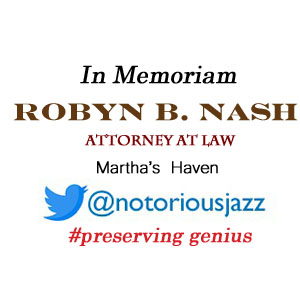
Daily Dose Of Jazz…
Roy Hamilton was born on April 16, 1929 in Leesburg, Georgia to Evelyn and Albert Hamilton, where he began singing in church choirs at the age of six. The summer of 1943 he was fourteen and the family migrated north to Jersey City, New Jersey in search of a better life. There he sang with the Central Baptist Church Choir, and attended Lincoln High School where he studied commercial art. Being gifted, his paintings were placed with a number of New York City galleries.
In 1947 the seventeen-year-old Hamilton took his first big step into secular music, winning a talent contest at the Apollo Theater. But nothing came of it, so to support himself he worked as an electronics technician during the day, and an amateur heavyweight boxer at night, with a record of six wins and one defeat. The following year he joined the Searchlight Gospel Singers, studied light opera, and continued to perform gospel until 1953 when the group broke up. Then he headed back into pop music with something different to offer.
1953 saw Roy discovered by Bill Cook, the first Black radio disc jockey and television personality on the East Coast. As his manager, Cook made a demo tape, brought it to the attention of Columbia Records and got him signed to Okeh Records. His first session produced Rodgers and Hammerstein’s You’ll Never Walk Alone from the musical Carousel. However Columbia released it on their pop label Epic and it topped the Billboard charts for eight weeks. He would go on to have hits with If I Love You, Ebb Tide and Unchained Melody and in 1955 was named Vocalist of the Year by Down Beat magazine. He would go on to record Great American Songbook singles Without a Song, Cuban Love Song, Everybody’s Got a Home But Me, and Somebody Somewhere.
Hamilton’s last hit record, You Can Have Her, came in 1961, and the Epic label treated him as a major star and issued sixteen albums by him. By the middle of the decade his career declined while recording with MGM and then RCA. In 1969 in Memphis, Tennessee, he made the final recordings of his career.
In early July 1969, he suffered a massive cerebral hemorrhage at his home in New Rochelle, New York. He was taken to New Rochelle General Hospital where he lay in a coma for more than a week. On July 20, 1969 vocalist Roy Hamilton, who was inducted into the Georgia Music Hall of Fame, was Epic Records first star, inspired Sam Cooke, and influenced Elvis Presley and the Righteous Brothers, died after being removed from life support. He was 40 years old.
More Posts: bandleader,history,instrumental,jazz,music,vocal
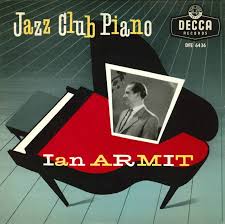
Daily Dose Of Jazz…
Ian Armit was born on April 11, 1929 in Kirckaldy, Fife, Scotland and little is known about his youth. Surfacing on the jazz scene in 1957 he was found performing with Sandy Brown and releasing the solo EP Jazz Club Piano for Decca Records.
In 1960 Ian began a two year stint with the Humphrey Lyttelton Band and went on to record with Al Fairweather, Cy Laurie, The Wally Fawkes-Sandy Brown Quintet and Wally Fawkes and The Troglodytes. He guested a few of Chris Barber appearances for BBC Radio in 1963. The following year he led his own quintet on the BBC Radio program “Three’s Company.
Tiring of jazz he turned his direction towards blues in late 1964 he joined Alexis Korner’s Blues Incorporated, followed by Long John Baldry’s Hoochie Coochie Men and then became a member of The Steampacket. He recorded with Rod Stewart, toured with Savoy Brown and Fleetwood Mac. He remained with Baldry until 1972 when he joined Bob Wallis on a European tour.
Moving to Switzerland, Armit once again led a quartet and recorded Ian’s Boogie Woogie with the Old Rivertown jazz band in 1989. He would play with the Piccadilly Six, the Harlem Ramblers and other blues bands.
Pianist, composer and bandleader Ian Armit, who never returned to jazz, died after a short illness on February 19, 1992 in Zurich, Switzerland.
More Posts: bandleader,history,instrumental,jazz,music,piano
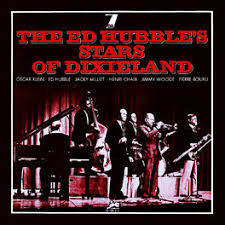
Daily Dose Of Jazz…
Eddie Hubble was born John Edgar Hubble II on April 6, 1928 in Santa Barbara, California and learned trombone from his father, who was also a professional trombonist in the Los Angeles, California area.
A move to New York City in 1944 and by late in the decade had played with Bob Wilber, Buddy Rich, Doc Evans, Alvino Rey, and Eddie Condon. He played with his own ensemble from the late 1940s, recording for Savoy Records in 1952.
He played with a Dixieland jazz ensemble known as The Six in 1953, and worked with Muggsy Spanier in the 1960s, playing in Ohio and Connecticut. He also worked with the World’s Greatest Jazz Band.
Despite being seriously injured in a car crash in 1979, he was soon back playing, including for international tours.
Trombonist Eddie Hubble died on March 22, 2016, at the age of 91.
More Posts: bandleader,history,instrumental,jazz,music,trombone
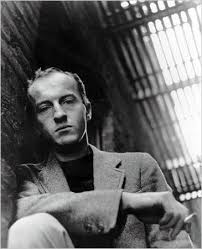
Jazz Poems
THE DAY LADY DIED It is 12:20 in New York a Friday three days after Bastille Day, yes it is 1959 and I go get a shoeshine because I will get off the 4:19 in Easthampton at 7:15 and then go straight to dinner and I don’t know the people who will feel me I walk up the muggy street beginning to sun and have a hamburger and a malted and buy an ugly NEW WORLD WRITING to see what the poets in Ghana are doing these days I go on to the bank and Miss Stillwagon (first name Linda I once heard) doesn’t even look up my balance for once in her life and in the GOLDEN GRIFFIN I get a little Verlaine for Patsy with drawings by Bonnard although I do think of Hesiod, trans. Richmond Lattimore or Brendan Behan’s new play or Le Balcon or Les Nègres of Genet, but I don’t, I stick with Verlaine after practically going to sleep with quandariness and for Mike just stroll into the PARK LANE Liquor Store and ask for a bottle of Strega and then I go back where I came from to 6th Avenue and the tobacconist in the Ziegfeld Theatre and casually ask for a carton of Gauloises and a carton of Picayunes, and a NEW YORK POST with her face on it and I am sweating a lot by now and thinking of leaning on the john door in the FIVE SPOT while she whispered a song along the keyboard to Mal Waldron and everyone and I stopped breathing FRANK O’HARAfrom Jazz Poems ~ Selected and Edited by Kevin Young
More Posts: book,classic,collectible,history,jazz,library,poet
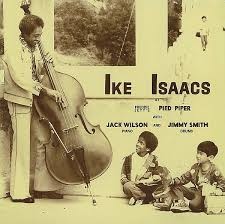
Daily Dose Of Jazz…
Born Charles Isaacs on March 28, 1923 in Akron, Ohio, he initially played trumpet and tuba as a child before settling on bass. He served in the Army during World War II, where he took lessons from Wendell Marshall. After the war he played with Tiny Grimes from 1948–50, Earl Bostic from 1951 to 1953, Paul Quinichette in 1953, and Bennie Green in 1956.
Ike, as he was affectionately called, led a local band in Ohio in 1956, then played for two years in the trio behind Carmen McRae, whom he married late in the decade. He went on to work with Lambert, Hendricks and Ross, then with Count Basie, Gloria Lynne, and Erroll Garner in the Sixties,
With his own small groups he recorded only once as a leader, At The Pied Piper in 1967 for RGB Records. On this recording he plays in a trio with Jack Wilson on piano and Jimmie Smith on drums. As a coleader he recorded two albums with Maxine Sullivan.
As a sideman he recorded twenty-six albums with Count Basie, Lambert, Hendricks & Ross, Roy Brown, Ray Bryant, Harry Edison, Eddie Lockjaw Davis, Pee Wee Erwin, Ella Fitzgerald, Billie Holiday, Erroll Garner, Bennie Green, Al Grey, Jon Hendricks, Carmen McRae, Big Miller, Esther Phillips, Dan Wall, Jack Wilson, and Joe Williams.
Bassist Ike Isaacs died on February 27, 1981.More Posts: bandleader,bass,history,instrumental,jazz,music


